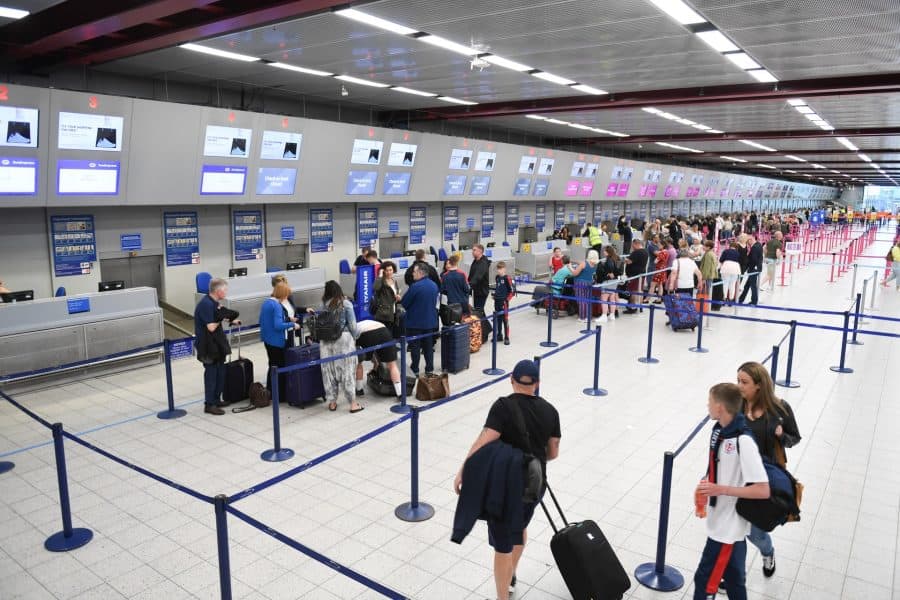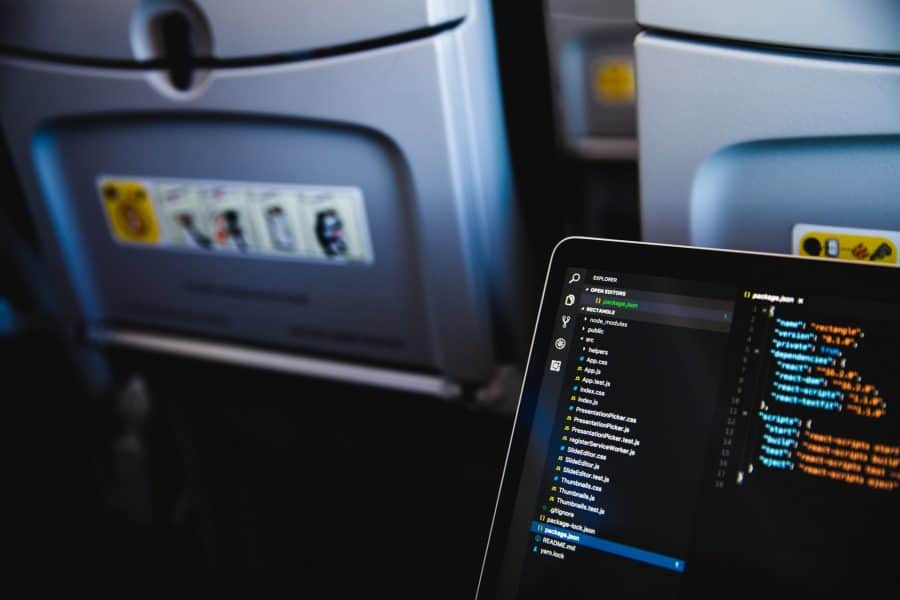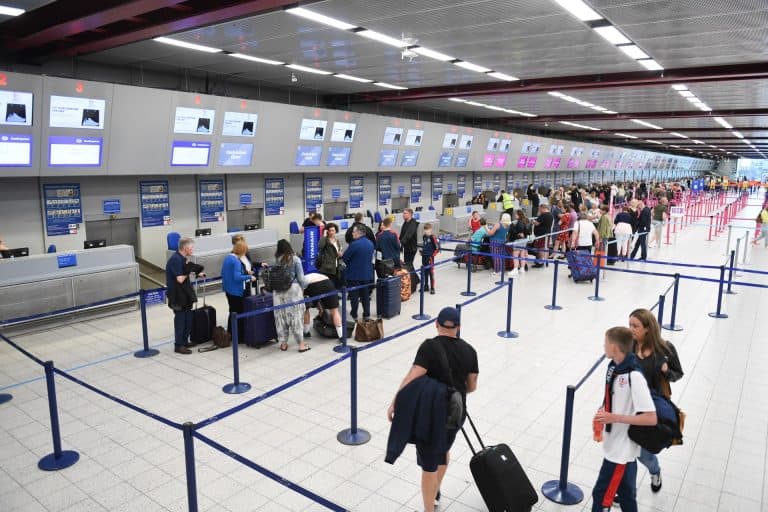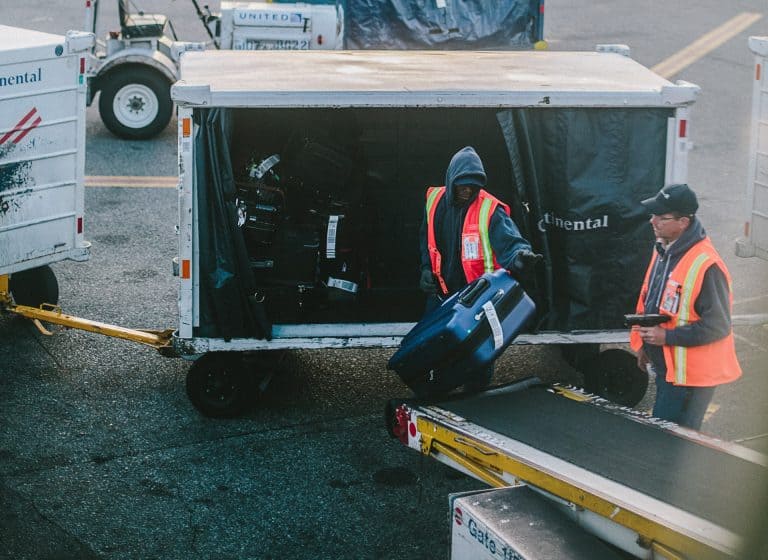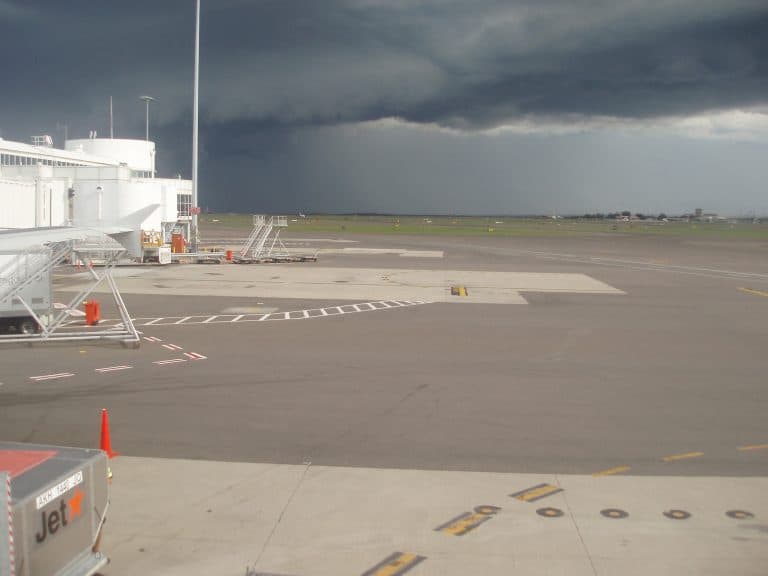Curious About Airport Moving Walkways? Here’s the Scoop
Moving walkways, people movers, ground-level escalators, travellators, moving sidewalks…whatever you want to call them, if you have traveled through airports, you have likely ridden on one of these moving walkways. Moving walkways are essentially escalators, except they do not go up and down, they travel at ground level.
These walkways ferry you in a straight and level line across hallways, gates, and terminals getting you where you need to be fast. They are essentially conveyor belts for people. But why are these walkways even necessary? Where did they originally come from? In this article, we examine the history and usage of these walkways.
The history of the people mover
Moving walkways were first introduced at the World?s Fair in Chicago in 1883 where it was seen as a futuristic marvel. There were two different versions of this people-mover, one where passengers could take a seat, and one where people could stand, which is the version that later became popular. However, this version of a moving sidewalk kept breaking down.
Later, at the Paris Expo in 1900, an improved version of a moving sidewalk was displayed. But again, these sidewalks were more of a futuristic novelty, that was prone to stalling. Though the technology existed, these walkways only appeared sporadically for several decades afterward.
The construction of these sidewalks used similar mechanics to that of conveyor belts. Similar technology was used in the creation of escalators. Though the use of escalators became popular, in the 1920s the wide-scale use of moving walkways would not be in vogue until the 1950s when the first commercial moving walkway was opened in 1954 at the Erie Railroad Passenger Terminal in Jersey City.
It was not until 1958 that the first moving sidewalk was installed at the Dallas Love Field Airport Terminal. From there the popularity of these moving walkways grew, primarily in airports and theme parks. It is easy to see why they became common in airports.
Why do we even need a moving sidewalk?
Airport terminals can be very long to walk through which causes congestion. As airports need to move people through long passageways quickly, moving sidewalks seemed like a good idea.
It makes sense. Airports can be very long and passengers often have to travel long distances between terminals to reach their destinations. You can make their trip shorter, and move them through the terminal faster, by creating a moving walkway.
Passengers can either walk on the moving sidewalk, propelling them faster over a long distance or stand still and just let the people mover do all of the work. After traveling for several hours, the moving walkway can be a welcome break, especially if you are traveling with a lot of luggage.
Even better, many airports such as Detroit Metropolitan Airport have installed art above and on the sides of their walkways, which provide opportunities for local artists and create an enjoyable experience for weary travelers.
Not only is it a welcome break for airline passengers, but it also prevents bottlenecks in the long terminals by moving passengers quickly and efficiently.
If someone needs to stop to rearrange their luggage or take a break, they no longer clog up the walkway by standing in the way. They can stop while continuing to move.
Even better, people who are mobility impaired, or who can not walk quickly, travel faster than they would on their own. This also prevents congestion.
For those who walk quickly, they can walk double the speed than they would normally which gets them to their location faster. Overall, it seems like moving sidewalks solve many problems that airports have with moving people quickly and efficiently. However, there are some downsides to the moving walkways.
Technical problems
When you install any type of technology in a building, you are bound to encounter technological problems at some point. From the moment these walkways were first introduced to the public at the World?s Fair in Chicago in 1883, walkways were prone to stalling and breaking down, requiring repair.

Today technology has improved, but that does not mean that technological issues do not exist. Just as you encounter escalators that are no longer running, you may also encounter moving walkways that are not moving…making them simply a static walkway with rails. When one of these walkways breaks down, it becomes a barrier rather than a solution to moving people through narrow passages. On top of the inconvenience, it costs money and time to upkeep and repair this technology.
Dangers and Injuries
Money and time also get wasted on lawsuits that are associated with injuries on the moving walkways. Injuries and very rarely deaths, do occur on moving sidewalks. In 1960, a two-year-old girl in an airport in Dallas Texas was killed when her coat sleeve was caught under the rubber belt of the travellator. This pulled her hand, wrist, and forearm underground level tugging on her clothing which eventually caused her death.
This is an exceptional case that occurred early on when moving sidewalks were rising in popularity. More safety regulations in the creation of moving walkways were put into place to prevent these types of incidents. Today the most common injuries are slips and falls, entrapment of fingers and toes, and clothing being caught in moving parts.
These types of injuries are often attributed to young children or elderly passengers. Injuries occur to elderly passengers who slip and fall on the moving walkways, sometimes hitting their head in the process.
Little kids, who are shorter and closer to the mechanics, and who do not know how to walk on the moving sidewalks safely, sometimes get their tiny fingers stuck in the moving parts. This can sometimes result in death or amputations.
Many injuries are caused by clothing getting caught in the moving parts, specifically the moving rails and at the end of the moving sidewalk where the conveyor belt moves the sidewalk component underneath the ground.
Often the injuries are caused by people who are using the moving walkways improperly. Passengers who treat it more like an amusement park ride, who walk backward on walkways or run, fall and hurt themselves, causing injury and disruption on the sidewalks.
Injuries, misuse, and the cost of repairs are some of the reasons why some airports are removing their moving sidewalks altogether.
Do moving sidewalks prevent bottlenecks?
It has been argued that now that people use rolling luggage rather than heavy suitcases, it is easier for them to walk without the use of moving sidewalks. While the intention is to move people faster on the walkways, studies show that people walk slower on moving walkways and that they do not save travelers time. Now, prepare for numbers because we are going to talk about average walking speeds!
According to Seth Young, Director of the Center for Aviation Studies at Ohio State University, the normal walking speed is approximately 3mph through the airport without a moving sidewalk.
However, when on the moving sidewalk, the passenger?s walking speed drops to 2.24 mph. When you compare this to the walkways speed which averages 1.4mph, then this means that the speed gained is only .66. Does that make installing an energy-consuming conveyor belt worthwhile?
It is a hard question because it depends on the space that the moving sidewalk is installed. In 2015 it was announced that all 8 of the moving walkways in Terminal 1, Concourse C section of Chicago O?Hare airport would be removed.
The reason was that the walkways were over 20 years old and were blocking foot traffic from walking both lengthwise and widthwise across the terminal.
When a space has multiple intersections where foot traffic needs to flow in multiple directions, these walkways, protected by guard rails, are an obstacle for foot traffic that needs to intersect them.
Furthermore, if your gate happens to be located in the middle of the moving walkway, once you exit the sidewalk, you are forced to backtrack which means you may be walking against foot traffic.
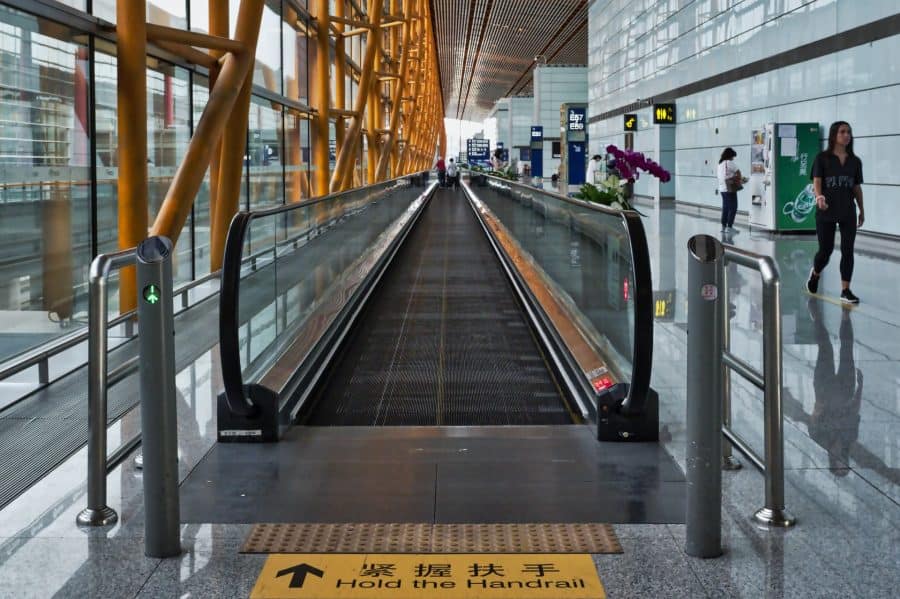
This was the case at Chicago O?Hare Airport which was built in the 1950s when foot traffic flow was much different than it is today. Over the years as foot traffic has increased and as more retail stores and gates were added, the location of the walkways in Terminal 1 Concourse C eventually became a hindrance instead of a convenience.
That?s not to mention the backups that happen on the travellator itself when people take up the entire space and do not allow others to move around them. Remember those beautiful art installations? They can also cause delays as people stand on the conveyor belt gazing at them, blocking traffic.
However, in airports that are designed or remodeled to handle the current amount of foot traffic they experience, these walkways can be very helpful. Such is the case at Denver International Airport.
Denver International Airport?s concourses are wider and the walkways are wider too which allows people who are walking at a faster pace to go around slower travelers without creating a backup. Speaking of backups, the biggest cause of traffic jams on the travellator happens when people do not follow walkway etiquette.
Moving Walkway Etiquette
For walkways to move fast and efficiently, it is important to follow a standard set of etiquette when riding them.
Stand right, walk left
Just like when you ride an escalator, if you plan to stand, rather than walk, this is perfectly fine, as long as you stand on the right. While you stand, make sure that your luggage is not blocking the left side. This allows other people to walk around you without causing a traffic jam. Even though you are walking on moving sidewalks, it is advised to walk on the right unless you are passing someone, then you walk on the left. This allows people who are walking faster than you to pass.
Look before changing lanes
It may so happen that you are standing on the right when you decide that maybe you want to walk. This is okay, but before changing lanes, make sure to check the left to see if anyone is already walking there. Do not cut in front of someone walking in the left lane. Let them pass then move.
Do not run
Do not run on the moving walkway as this is unsafe. When you rush, you can trip and fall or accidentally make others trip and fall. Many of the injuries that happen on moving walkways are caused by rushing.
Walk and stand correctly
This is not an amusement park. It may seem fun to walk backward or walk in the opposite direction, but again this causes accidents. As does sitting or leaning on the moving rail. This risks getting your clothes caught in the moving mechanisms resulting in injury.
Do not stand at the end
One of the biggest causes of traffic jams occurs at the very end of the moving sidewalk when people are stepping off of the ramp. Many are tempted to stop and gain their bearings as they decide what direction to go next. Unfortunately, the moving sidewalk does not stop for anyone which means if you are blocking the opening, people begin to pile up. If you need to reorient yourself, be polite, and move to the side before stopping.
Depending on the airport, moving sidewalks may be a blessing or a hindrance. If you follow basic etiquette you can ensure that you get to your destination more smoothly. Whether you believe the travellators speed up your journey or slow you down, one thing is for certain, they are not completely disappearing from airports anytime soon. Chances are, the next time you fly, you will find yourself coasting through the terminal on what was once seen as a futuristic marvel.
More from AirportNerd
The Complete Guide to Airplane Window Shade Etiquette
Picture this. You are sitting in the most undesired seat on the airplane, the middle…
Why Do Airlines and Airports Use 24-Hour Time?
The culprit of many missed flight connections: distinguishing between 12-hour and 24-hour clocks. While most…
Why Are Airports Named After U.S. presidents?
Donald Trump has been in the news for wanting to rename Palm Beach International Airport…
Why Do Laptops Get Special Attention at Airport Security?
?Shoes off, laptops out, liquids in zip lock bags, all in separate trays!? Frequent flyers…



